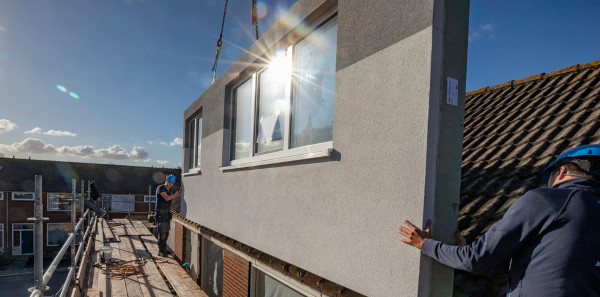
Energiesprong
Building electrification (also known as fuel switching) is a necessary but insufficient step along the road to decarbonization. Over the last 100-years the vast majority of dwellings in the First-world were piped for natural gas. However, as previous posts have discussed, homeowners need to divest themselves from gas as rapidly as possible if we’re to hang onto a livable planet. Cooking and heating have to switch to electric mode.
Although making that switch will be a tough sell — gas molecules are generally a lot cheaper than electrons. Where I live, heating the house costs $0.05 per kilowatt-hour for gas and from $0.20 - $0.44 per kilowatt-hour for resistance heating (“electric heater”). That’s for an existing house — of which there are approximately 100 million units in North America (including low-rise multi-family apartment buildings). All of those will have to switch, as well as designs for new construction. Abiding by the Paris Climate Accord means electrifying everything over the next 30-years and finally ending the Age of Fire. It’s a huge job. Yet to keep electrification affordable, homes need to be retrofit to high-performance levels so as to minimize electricity demand. A readily-scaleable procedure to achieve those goals is needed.
One such method has been developed in the Netherlands. Energiesprong is a scaleable, financially-viable, deep-energy refurbishment program using Passive House methods (energiesprong.org). The idea is to aggregate housing demand so retrofit financing can be kept affordable and the project pipeline full. In the Netherlands, Energiesprong started simple by first tackling social-housing-tracts as shown here. Their procedure has matured to the point that this kind of refurbishment is completed within 1-week. Roof-top PV modules are included.
To begin the retrofit, a survey team shows up and determines house characteristics. A drone is released to build an exterior model using photogrammetry. Once complete, the digital model is uploaded to an assembly factory. There, a mostly-automated process assembles walls and roofs quickly, to a precision of 1-millimeter. At the dwelling site, because of their precision, pre-assembled walls and roofs can be quickly hoisted and fit into place. Deep-energy electrification retrofits like this reduce operational greenhouse gas emissions by removing existing gas-lines. A collateral benefit for the occupants is reduction in external noise levels and improved indoor air quality.
Energiesprong has been successful because refurbishment investments are financed through energy savings. The idea crossed the Atlantic in 2017 and has developed a strong following in North America. Early examples show energy costs can decrease by 80%, energy use by 90%, and carbon emissions by 94%.
https://www.edenmills.ca/Carbon-Netural
https://sbcanada.org/energiesprong/
https://www.nyserda.ny.gov/All-Programs/RetrofitNY/What-is-RetrofitNY
